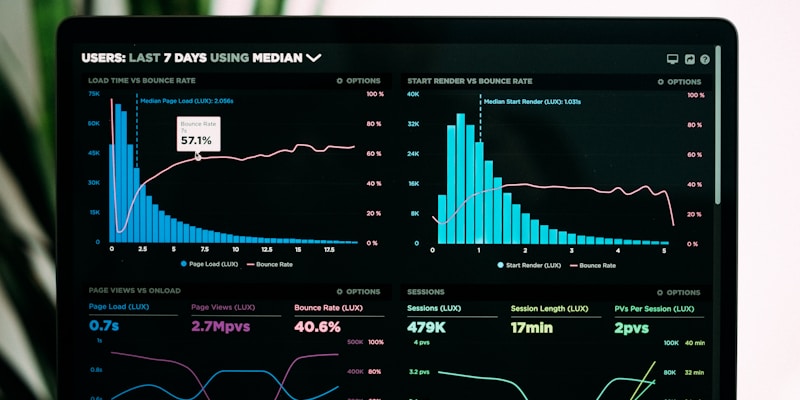Why Next.js is Perfect for SaaS Applications

When building a Software as a Service (SaaS) application, choosing the right framework is one of the most critical decisions you'll make. Next.js has emerged as a leading choice for SaaS developers, offering a powerful combination of performance, developer experience, and scalability. In this article, we'll explore why Next.js is the perfect foundation for your SaaS product.
The Rise of Next.js in SaaS Development
Next.js, built on top of React, has gained tremendous popularity in recent years. Created by Vercel, this open-source framework has been adopted by companies like Netflix, TikTok, Twitch, and many others. Its rapid adoption in the SaaS space is no accident—it addresses many of the unique challenges that SaaS developers face.
Key Benefits of Next.js for SaaS Applications
1. Flexible Rendering Options
Next.js offers multiple rendering strategies that are crucial for SaaS applications:
- Server-Side Rendering (SSR): Generates HTML on each request, perfect for dynamic, personalized user dashboards.
- Static Site Generation (SSG): Pre-renders pages at build time, ideal for marketing pages, documentation, and blog posts.
- Incremental Static Regeneration (ISR): Updates static content after deployment without rebuilding the entire site—perfect for content that changes periodically.
- Client-Side Rendering: For highly interactive components that need to update frequently.
This flexibility allows you to optimize each part of your SaaS application for the best performance and user experience. Your marketing pages can be lightning-fast with SSG, while user dashboards can display personalized, up-to-date information with SSR.
2. Built-in API Routes
Next.js includes API routes that allow you to build your API endpoints within the same project as your frontend. This feature is particularly valuable for SaaS applications, as it:
- Eliminates the need for a separate backend service for simple operations
- Simplifies development by keeping related code together
- Reduces deployment complexity
- Makes it easier to implement features like authentication, webhooks, and third-party integrations
With API routes, you can quickly build endpoints for user management, subscription handling, and other SaaS-specific functionality without setting up a separate server.
3. Optimized Performance
Performance is critical for SaaS applications. Users expect fast, responsive interfaces, and search engines reward speedy websites with better rankings. Next.js includes several performance optimizations out of the box:
- Automatic code splitting: Only loads the JavaScript needed for each page
- Image optimization: Automatically optimizes images for different devices and viewport sizes
- Font optimization: Eliminates layout shifts with optimized font loading
- Script optimization: Controls how third-party scripts are loaded
These optimizations help ensure your SaaS application provides a smooth, fast experience for all users, regardless of their device or connection speed.
4. Enhanced Developer Experience
Next.js is designed with developer experience in mind, offering features that accelerate development and reduce friction:
- Fast Refresh: Instantly see your changes without losing component state
- TypeScript support: Built-in TypeScript configuration for type safety
- File-based routing: Intuitive routing based on your file structure
- Built-in CSS support: Support for CSS Modules, Sass, and other styling solutions
- Middleware: Run code before a request is completed
These features help your team build faster and with fewer bugs, which is essential when developing complex SaaS applications with multiple features and user types.
5. Scalability for Growing SaaS Products
As your SaaS product grows, your framework needs to scale with it. Next.js is designed for scalability:
- Supports large codebases with efficient compilation
- Enables incremental adoption—start small and add features as needed
- Works well with microservices and monorepo architectures
- Integrates with various data sources and backends
This scalability ensures that Next.js can support your SaaS application from MVP to enterprise-scale product.
Real-World Examples: Next.js in SaaS
Many successful SaaS companies have built their products with Next.js:
- Vercel: The creators of Next.js use their own framework for their deployment platform
- Notion: The popular productivity tool uses Next.js for parts of their web application
- TikTok: Their web experience is built with Next.js
- Loom: The screen recording tool uses Next.js for their web application
These companies demonstrate that Next.js can handle the demands of high-traffic, feature-rich SaaS applications.
Common SaaS Features Implemented with Next.js
Authentication and User Management
Next.js works seamlessly with authentication providers like NextAuth.js, Auth0, and Clerk, making it easy to implement secure user authentication. The API routes provide a convenient place to handle user registration, login, and profile management.
Subscription and Payment Processing
Integrating payment processors like Stripe is straightforward with Next.js. You can use API routes to create secure endpoints for handling webhooks, subscription changes, and payment processing.
Multi-tenancy
Next.js's flexible routing and middleware make it well-suited for building multi-tenant SaaS applications. You can implement tenant isolation at various levels of your application architecture.
Real-time Features
Next.js works well with WebSockets and real-time databases, enabling features like live collaboration, notifications, and updates that are common in modern SaaS applications.
Getting Started with Next.js for Your SaaS
If you're convinced that Next.js is the right choice for your SaaS application, here's how to get started:
1. Set Up Your Development Environment
Create a new Next.js project with the following command:
npx create-next-app@latest my-saas-appThis will set up a new Next.js project with the latest features and best practices.
2. Choose Your Stack
Next.js is flexible and works with various technologies. For a SaaS application, consider:
- Database: Prisma with PostgreSQL, MongoDB, or Supabase
- Authentication: NextAuth.js, Auth0, or Clerk
- Styling: Tailwind CSS, Chakra UI, or styled-components
- State Management: React Query, SWR, or Zustand
- Payments: Stripe, Paddle, or LemonSqueezy
3. Plan Your Architecture
Consider how you'll structure your application:
- Organize pages and components for maintainability
- Set up API routes for backend functionality
- Implement authentication and authorization
- Design your database schema
- Plan your deployment strategy
4. Implement Core Features
Start building the essential features of your SaaS:
- User authentication and account management
- Subscription and payment processing
- Core functionality that solves your users' problems
- Admin dashboard for monitoring and management
Conclusion: Next.js as Your SaaS Foundation
Next.js offers a powerful, flexible foundation for building modern SaaS applications. Its combination of performance optimizations, developer experience, and scalability makes it an excellent choice for SaaS developers at any stage—from MVP to mature product.
By leveraging Next.js's features like flexible rendering strategies, API routes, and built-in optimizations, you can create a SaaS application that provides an exceptional user experience while maintaining developer productivity and code quality.
As the framework continues to evolve with regular updates and improvements, Next.js remains at the forefront of web development, ensuring your SaaS application is built on a solid, future-proof foundation.
Related Articles

How to Build a SaaS Product from Scratch
A comprehensive guide to building your first SaaS product, from idea validation to launch and beyond.

SaaS Pricing Strategies That Actually Work
Learn about different pricing models for SaaS products and how to choose the right one for your business.
Subscribe to Our Newsletter
Get the latest SaaS development tips, tutorials, and resources delivered straight to your inbox.
We respect your privacy. Unsubscribe at any time.